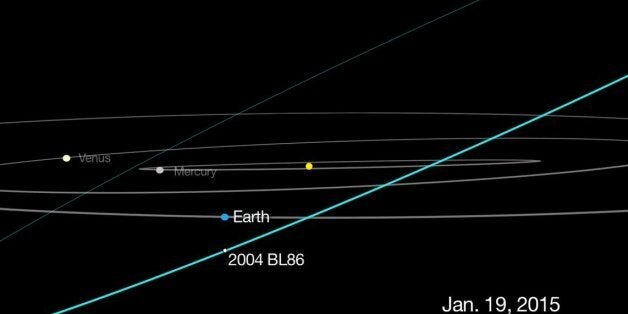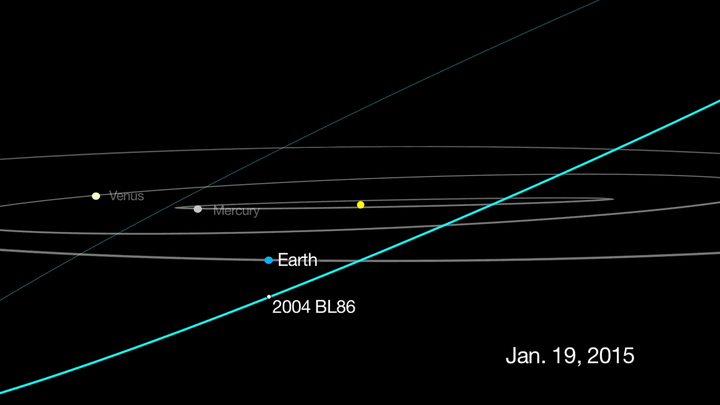
NASA says that an asteroid larger than the Empire State Building is set to fly dramatically close to Earth later this month.
But there's no reason to panic. Or, you know, pray.
The space rock in question - asteroid 2004 BL86 - will barrel past our planet, currently the only known source of life in existence, on 26 January.
Fortunately NASA said the flyby will pass safely above our heads at a pleasingly wide 745,000 miles -- or three times the distance to the Moon.
But as the enormity of space goes, that's not actually very far at all. And NASA admits it has some work to do in order to make sure no other rocks of similar scale are going to come even closer in the relatively near future.

The pass-by on January 26 "will be the closest asteroid 2004 BL86 will get to Earth for at least the next 200 years" according to Don Yeomans, who is retiring as manager of NASA's Near Earth Object Program Office at the Jet Propulsion Laboratory after 16 years.
The good news it will be viewable to amateur astronomers with only strong binoculars.
"And while it poses no threat to Earth for the foreseeable future, it's a relatively close approach by a relatively large asteroid, so it provides us a unique opportunity to observe and learn more."
NASA will use that opportunity to bombard the asteroid with microwaves, in an attempt to find out what the asteroid looks like, what it is made of and how it was made.
"When we get our radar data back the day after the flyby, we will have the first detailed images," said radar astronomer Lance Benner of JPL.
"At present, we know almost nothing about the asteroid, so there are bound to be surprises."
NASA said that the asteroid will be the largest to fly past Earth until the arrival of asteroid 1999 AN10 in 2027 -- which will also miss us.
But while that all sounds quite nice and pleasant, the fact is we still don't know nearly enough about asteroids, how to track them and how often they pound into our planet.
NASA's Near Earth Object program - sometimes known as 'Spaceguard' - has detected most of the threatening asteroids above a certain (large) size. Similar programs are run by ESA and others. But of the estimated million asteroids in our solar system that have the potential to destroy a city on Earth, we currently know about 10,000 of them -- or less than 1%.
In late 2014 more than 100 scientists and activists signed a pledge to support the first global Asteroid Day on June 30th 2015, in order to call for a 100-fold increase in the discovery and tracking of near-Earth asteroids, and for new technology to track those rocks.
"As scientists and citizens, we strive to solve humanity’s greatest challenges to safeguard our families and quality of life on Earth in the future.
"Asteroids impact Earth: such events, without intervention, will cause great harm to our societies, communities and families around the globe. Unlike other natural disasters, we know how to prevent asteroid impacts."
Unfortunately the tracking of very large asteroids can only make a practical difference if we're then able to do something about the rock - deflecting or destroying it, preferably. And unfortunately - again - NASA's best guess on how to do that so far is… prayer.
Ah.